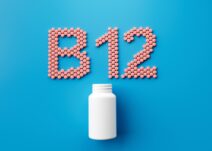In medical school, we learned about the body by breaking it down into each system. Everything is neatly categorized into distinct compartments. While this certainly makes sense from an academic standpoint, the truth is, the body is much more complex than that.
The body's systems are intricately and inextricably interconnected—it’s impossible to truly disentangle any one system from another. But this complex web doesn’t end there—there are some other crucial threads intertwined within this web. Things like our environment, the microbes that inhabit our bodies, and our emotional state—they all come together to create the delicate, intricately woven web that makes up our well-being.
Just as a disturbance in one thread can reverberate through the entire web, disruptions in one body system can impact others. And nowhere is this complicated entanglement more evident than in the complex relationship between mold, mast cell activation syndrome, and gut health. Let’s dive into this fascinating connection by first defining what mold toxicity is.
Mold Toxicity Defined
Exposure to mold and its toxic metabolites (known as mycotoxins) can cause a condition known as mold toxicity or mold illness. Mold toxicity occurs when the microscopic poisons found within mold sneak their way into the body via airborne spores or through contaminated food sources. These microscopic toxins can ignite widespread inflammation, damage cellular structures, confuse the immune system, impair cellular communication, and much more.
But mycotoxins can have a particularly potent impact on gut health.
Impact of Mold on Gut Health
Mycotoxins can wreak havoc on gut health by:
Changing the structure and morphology of the intestinal epithelium, damaging tight junction proteins and causing increased intestinal permeability.
Altering both the abundance and diversity of intestinal microflora, leading to gut dysbiosis.
Significantly reducing the production and secretion of mucin (the protective mucus barrier lining the gut epithelium), compromising this crucial barrier and increasing susceptibility to pathogens and toxins.
Activating the immune response, stimulating immune cells in the gut mucosa and triggering the inflammatory cascade.
Inducing the production of reactive oxygen species (ROS) in intestinal cells and contributing to oxidative stress and inflammation in the gut.
Interfering with nutrient absorption in the intestines,
Exerting cytotoxic effects, leading to cell death or damage—thus disrupting the normal turnover of intestinal epithelial cells and impairing tissue repair mechanisms.
Mold’s ability to stir up trouble doesn't end there. Mold is also notorious for sparking another imbalance that can wreak havoc on gut health: mast cell activation syndrome.
The Plot Thickens: Mold’s Role In Mast Cell Activation Syndrome (MCAS)
As toxic mold spores make their way into the body, the immune system becomes activated—triggering massive mast cell degranulation. Now, exposure to the small amounts of mold spores naturally found in the outdoor environment is not typically a problem. But because mold can be unknowingly lurking in homes and buildings or be found in high concentrations in contaminated food, many people end up being repeatedly exposed to elevated levels of damaging mycotoxins.
With repeated exposure, this mast cell degranulation triggered by toxic fungi can lead to an increase in levels of a pro-inflammatory mediator known as Prostaglandin D2 or PGD2. An increase in PGD2 levels can create a vicious cycle—triggering mast cell hypersensitivity which leads to increased degranulation, which further ups PGD2 levels, and so on and so forth.
This cascade of inflammation and mast cell degranulation triggered by mold can send mast cells into a tailspin, causing them to be chronically stuck in overproduction mode known as mast cell activation syndrome. And this excessive release of mast cell mediators can throw gut health even further out of equilibrium.
MCAS and Gut Health
Excessive mast cell degranulation disrupts gut homeostasis at the cellular level, leading to:
- Intestinal barrier dysfunction
- Immune activation
- Inflammation
- Visceral hypersensitivity
- Dysregulated gut motility
- Mucosal damage
- Dysbiosis
- Systemic effects
This domino effect of mold toxicity and overactive mast cells can ravage the gut—causing a wide variety of gut-related and systemic symptoms. So how can we address this complex web of dysregulation and imbalance?
Healing the Microbiome After Mold and Mast Cell Dysregulation
Mold exposure, MCAS, and gut health are interconnected in a complex web of dysregulation— each factor influencing and exacerbating the others. Breaking this cycle of dysfunction and supporting patients in healing requires addressing all factors simultaneously. Let’s dive into some of the key steps required to begin healing the gut and rebalancing the microbiome.
Addressing Mold Toxicity
If mold toxicity is suspected it’s important to take a two-pronged approach that includes minimizing exposure and enhancing detoxification. Let’s zoom in on each of these.
Minimize Exposure: The first and most important step that must be addressed before anything else, is minimizing exposure to these toxic metabolites. Minimizing exposure typically requires a comprehensive plan that will likely include:
- Identifying sources of exposure and completing mold remediation.
- Disposing of contaminated items that can not be salvaged through mold remediation.
- Cleaning up of the home environment and taking steps to prevent future mold growth.
- Utilizing air filtration systems proven to trap and remove mold spores.
- Following a low-mold diet.
Once exposure has been addressed, you can move on to the second phase.
Enhancing Detoxification: After treating countless patients for mold exposure, I’ve developed a very specific mold detox protocol to aid the body in eliminating mold and begin healing underlying damages. It includes:
- Reduced glutathione to supercharge detoxification.
- A complete suite of B-complex vitamins to provide support for cellular and hepatic function.
- Nanoparticle milk thistle to stabilize and protect the liver during a time of high activity.
- A formulation of Nicotinamide Mononucleotide (NMN) and Trimethylglycine (TMG) to support recovery, energy production, and maximum detoxification by boosting cellular ATP generation and mitochondrial health.
- Essential minerals and trace elements to support electrolyte balance and remineralization during detoxification.
- A blend of bitter herbs, R-Lipoic Acid, DIM, milk thistle, quercetin, and luteolin to support all phases of detox, boost bile flow, and encourage a healthy inflammatory response
- Detox binders to magnetize and trap toxins.
- You can read more about the detox process in my article on Toxic Mold and all of the Mold Archives.
Some other ways to amplify natural detoxification pathways include:
- Infrared sauna therapy
- Dry brushing
- Pulsed electromagnetic field (PEMF) therapy
- Proper hydration
- A healthy diet with plenty of fiber to encourage regular bowel movements
Once mold has been addressed, the next phase is stabilizing mast cells.
Stabilizing Mast Cells
Many of the ways that we can support and soothe overactive, malfunctioning mast cells go hand in hand with supporting a healthy, balanced gut. Some key strategies that can help stabilize mast cells include:
- Avoiding triggers: This will look different for each individual but triggers may include exposure to allergens (like dust mites, pollen, or dander), chemicals (like synthetic fragrances), friction or pressure (like tight clothing), or extreme temperature changes.
- Addressing hidden, underlying infections: Sometimes a severe, chronic, or underlying infection can essentially force the immune system to stay in the “on” position – triggering mast cells to become overly aggressive. So it’s important to identify and treat underlying infections (like Lyme disease, EBV, or Long COVID).
- Supporting a healthy circadian rhythm: Disruptions in the sleep-wake cycle can lead to dysregulation of immune function and increased mast cell activation. Maintaining consistent sleep patterns and exposure to natural light during the day can help regulate circadian rhythms, optimize immune function, and reduce mast cell hyperactivity.
- Prioritizing a nutrient-dense, low-histamine diet: Prioritizing nutrient-dense, low-histamine foods can reduce the burden on the immune system, minimize histamine intake from food sources, and provide essential nutrients that support immune function and mast cell stabilization.
These strategies can help restore calm to misbehaving mast cells and help them pump the brakes on degranulation and the release of inflammation-stoking mediators.
Supporting Gut Health
Toxic mold can sometimes be like the first domino to fall, causing a chain reaction that disrupts your immune system, impairs your gut health, throws the microbiome out of whack, and more. So once mold exposure is addressed and steps to stabilize mast cells have begun, it’s imperative to support the gut in healing.
A couple of additional—and often overlooked—ways to support gut healing include:
Focus On Mental Health and Limbic System Retraining: Mold exposure is notorious for triggering distinct neurological and emotional changes. Pair that with the fact that MCAS and gut dysbiosis can dramatically impact the gut-brain axis, and it’s easy to see why this trio of effects can cause significant nervous system dysregulation.
This can essentially reset the nervous system, shifting the balance of this delicate network and causing the nervous system to get stuck in a sort of “fight or flight” mode. So it's crucial to essentially reset the limbic system and support a more regulated nervous system by rewiring the brain to return to a more balanced, restful state.
This may include things like biofeedback, tapping, breathwork, and a variety of other modalities. Nervous system regulation is a piece of the puzzle that is often overlooked but is so necessary for true healing.
Minimize Exposure To Other Environmental Toxins: While mold is certainly one of the worst offenders when it comes to environmental toxins, it’s far from the only one that can wreak havoc on your gut health. Minimizing exposure to other inflammation-stoking, gut-dysregulating, and endocrine-disrupting chemicals can drastically reduce the burden on your immune system – allowing the gut to begin healing.
Lowering the toxic burden can be accomplished by utilizing air filtration systems for indoor air, removing contaminants from drinking water with effective purification systems, and using home and personal care products with cleaner, less toxic ingredients.
Next Steps For Addressing the Interplay Between Mold, MCAS, & Gut Health
Our understanding of mold, mast cells, and gut health has evolved rapidly and immensely over the past decade. And while we still undoubtedly have much to learn, there’s one thing we can know for sure: Our well-being depends on so much more than our physical body. Our external environment, the microbes that reside within us, the thoughts we think, and emotions we experience, and many other factors aside from our physical body all come together to create the picture of our health and well-being.
As our world continues to change, I have no doubt that there will be an even more dire need for practitioners, professionals, and products that help us better serve and heal patients struggling with complex conditions and imbalances like mold toxicity, MCAS, and impaired gut health. And as a Functional Medicine Doctor, I am honored and excited to be a part of the community of brilliant minds all working together to understand and unravel the complexities of this intricate, interconnected web that defines our health.
For more information, visit jillcarnahan.com.

.jpeg?t=1720459746&width=1080)








